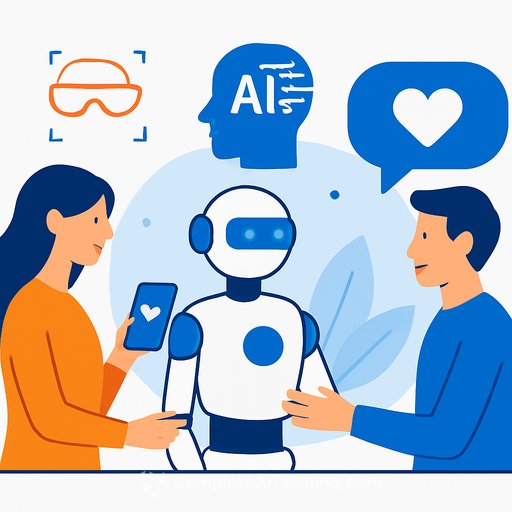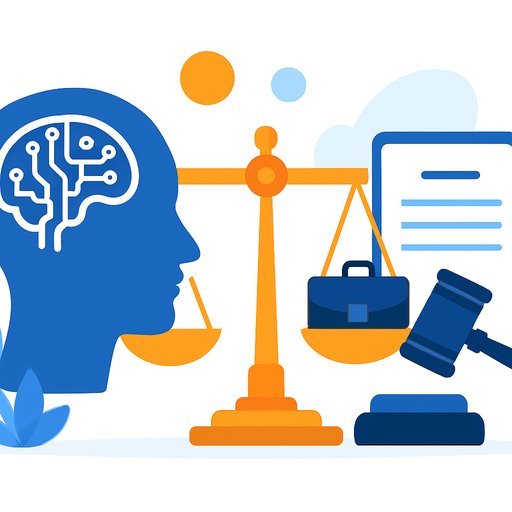How AI Is Redefining the Way Brands Connect With Customers
Experiential branding hasn't changed at its core. Consistency, authenticity, and emotional pull still win. What's changed is how we get there.
AI gives marketers three advantages: hyper-personalization at scale, immersive experiences that feel made for the moment, and real-time responsiveness. Pair that with a human voice, and you get experiences people remember and talk about.
Key takeaways- Hyper-personalization is now the baseline for experiential campaigns.
- AI and AR together create immersive, interactive moments that stick.
- Real-time feedback loops turn static journeys into living systems.
- Human judgment is the filter that keeps AI-driven experiences authentic.
1) Build hybrid experiences that people actually want
Your audience wants choice. Let them engage on their terms-online, in-store, or both. AI can personalize the "what," and AR can show the "how." Together, they create a dynamic path that feels made for the individual.
A clear example: virtual try-ons for beauty or fashion. Brands use facial analysis to recommend shades, styles, or sizes, while AR renders the look in real time. Sephora's virtual try-on shows the model in action and sets expectations for convenience and accuracy. See how it works.
In-store, smart mirrors and screens can recognize loyalty profiles (with consent) and surface offers, product pairings, or service bookings. Keep it opt-in, transparent, and useful. Frictionless beats flashy.
- Use AI to predict intent (shade, fit, style).
- Use AR to visualize the outcome instantly.
- Use loyalty data to personalize the next step (offer, appointment, sample).
2) Turn events into interactive storytelling
Events are your best lab for live engagement. AI can adapt content based on audience signals so every touchpoint feels relevant. Think displays that shift based on sentiment, traffic flow, or product interest.
Set up chatbots as event concierges. They answer questions, recommend sessions, and route people to demos based on what they care about. Recommendation engines do the heavy lifting so your team can focus on people, not logistics.
Want reach beyond the venue? Use NLP to analyze live feedback, then tweak the narrative mid-campaign. Even guerrilla activations can get smarter-use real-time foot traffic to pick locations and timing for maximum visibility.
- Dynamic screens: rotate creative based on engagement and mood.
- Event chatbots: guide, recommend, and collect zero/first-party data.
- Story loops: analyze responses and adjust the message the same day.
3) Make your experience responsive in real time
Personalization isn't a campaign. It's a system. Use AI to map behavior patterns (browsing, social, purchase) into next-best actions across channels. Offer the right content, at the right moment, without guesswork.
Gen Z is a good stress test. Preferences shift fast, and they expect brands to keep up. Intelligent chatbots, adaptive landing pages, and recommendation engines let you respond without rebuilding the funnel every week.
The result: fewer generic messages, more relevance. That's what drives repeat visits and higher LTV. McKinsey found that personalization can lift revenue and reduce acquisition costs-proof that relevance pays. Read the research.
- Predict journeys: use propensity models for content, offer, or channel.
- Automate next steps: push recs, promos, or concierge support as behavior changes.
- Close the loop: feed outcomes back into the model to improve accuracy.
4) Blend automation with a human voice
AI handles volume and speed. Humans handle taste, story, and nuance. You need both.
Let AI draft, sort, and generate options. Then edit for tone, cultural context, and brand values. Packaging and merchandising are great examples-use AI to spot patterns in feedback and sales, then let your team choose the concept that actually connects.
For content, tools like Canva or AKOOL can spin up images and video variants fast. Keep a creative lead in the loop to ensure each asset feels like something your brand would say in person, not a template.
- Automate repetitive work (variants, resizing, transcriptions).
- Keep humans in approvals for taste and cultural fit.
- Review live performance weekly; prune what doesn't move the needle.
Privacy, consent, and trust (non-negotiable)
Facial analysis, emotion tracking, and location targeting can be useful-and sensitive. Keep it opt-in, explain the value, and give people a way out. Respect builds trust; trust fuels loyalty.
- Use clear signage and consent flows.
- Favor zero/first-party data with transparent value exchange.
- Audit vendors for security and compliant data practices.
Quick start playbook for marketers
- Pick one journey to improve (e.g., try-on, event demo, loyalty reactivation).
- Define the signal → action loop (input data, trigger, response, metric).
- Prototype with off-the-shelf tools before custom builds.
- Measure one primary metric (conversion, AOV, dwell time, repeat rate).
- Scale what works; kill what doesn't-fast.
Experiential branding still runs on emotion. AI helps you deliver it at scale without losing the human feel. Start small, stay honest, and build feedback loops that learn faster than your competitors.
Want a curated path to upskill your team on AI for marketing? Explore practical programs built for marketers: AI Certification for Marketing Specialists.
Your membership also unlocks:






